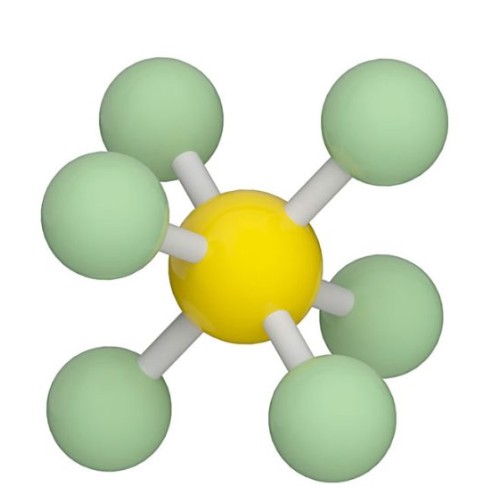Sulfur hexafluoride (SF6) is a colorless, odorless synthetic gas renowned for its exceptional electrical insulating properties. Despite its critical role in powering modern infrastructure, SF6 has come under scrutiny due to its staggering environmental impact. This article explores SF6’s applications, its ecological footprint, and the innovative alternatives shaping a greener future.
What Is SF6 Gas?
SF6 is a fluorinated compound composed of sulfur and six fluorine atoms. First synthesized in 1901, it gained prominence in the mid-20th century for its unique characteristics:
- High Dielectric Strength: 3x superior to air, making it ideal for electrical insulation.
- Chemical Stability: Non-flammable, non-toxic, and inert under normal conditions.
- Thermal Conductivity: Efficient in cooling high-voltage equipment.
These properties have cemented SF6 as a cornerstone of electrical and industrial applications.
Key Applications of SF6 Gas
1. Electrical Power Systems
SF6 is the lifeblood of high-voltage switchgear, circuit breakers, and gas-insulated substations (GIS). It prevents dangerous arcs, ensuring grid reliability in urban centers and renewable energy systems like wind turbines.
2. Medical and Scientific Uses
In healthcare, SF6 stabilizes retinal surgeries and enhances ultrasound imaging. Laboratories leverage it for particle acceleration and plasma etching in semiconductor manufacturing.
3. Industrial Processes
SF6 insulates magnesium production furnaces and acts as a tracer gas for detecting leaks in pipelines and HVAC systems.
The Environmental Paradox of SF6
While SF6 boosts industrial efficiency, it’s the most potent greenhouse gas ever evaluated:
- Global Warming Potential (GWP): 23,500x greater than CO2 over a 100-year period.
- Long Atmospheric Lifespan: Persists for 3,200 years, exacerbating climate change.
According to the Intergovernmental Panel on Climate Change (IPCC), SF6 concentrations have surged by 40% since 2000, driven by expanding electrical grids and renewable energy infrastructure.
Regulatory Actions and Industry Shifts
The Kyoto Protocol classifies SF6 as a regulated greenhouse gas, prompting global mitigation efforts. The European Union’s F-Gas Regulation mandates phasedown targets, pushing industries to adopt alternatives.
Innovative Substitutes Gaining Traction:
- Fluoronitrile-Based Gases: GE’s g3 gas reduces GWP by 98% in high-voltage gear.
- Dry Air or Nitrogen: Effective for medium-voltage applications.
- CO2 Blends: Emerging in circuit breakers for lower environmental impact.
Companies like Siemens and ABB now offer SF6-free switchgear, aligning with sustainability goals.
Best Practices for SF6 Management
- Leak Detection: Regular monitoring using infrared cameras.
- Recycling: Purification and reuse to minimize virgin SF6 production.
- Training: Ensuring technicians follow protocols for handling and disposal.
The EPA’s SF6 Emission Reduction Partnership has cut U.S. emissions by 60% since 1999 through such strategies.
The Road Ahead: Balancing Progress and Sustainability
The transition to SF6 alternatives faces hurdles, including higher costs and technical limitations. However, stricter regulations and corporate ESG commitments are accelerating R&D. Europe aims to eliminate SF6 in medium-voltage equipment by 2030, signaling a paradigm shift.
Future Innovations to Watch:
- Solid Insulation: Eco-friendly polymers for compact switchgear.
- Digital Monitoring: IoT sensors for real-time gas tracking.
Conclusion
SF6 gas remains indispensable to global electrification, yet its environmental toll demands urgent action. By embracing alternatives, enhancing recycling, and adhering to regulations, industries can mitigate climate risks while maintaining operational excellence. The journey to replace SF6 is not just a technical challenge—it’s a critical step toward a sustainable energy future.

